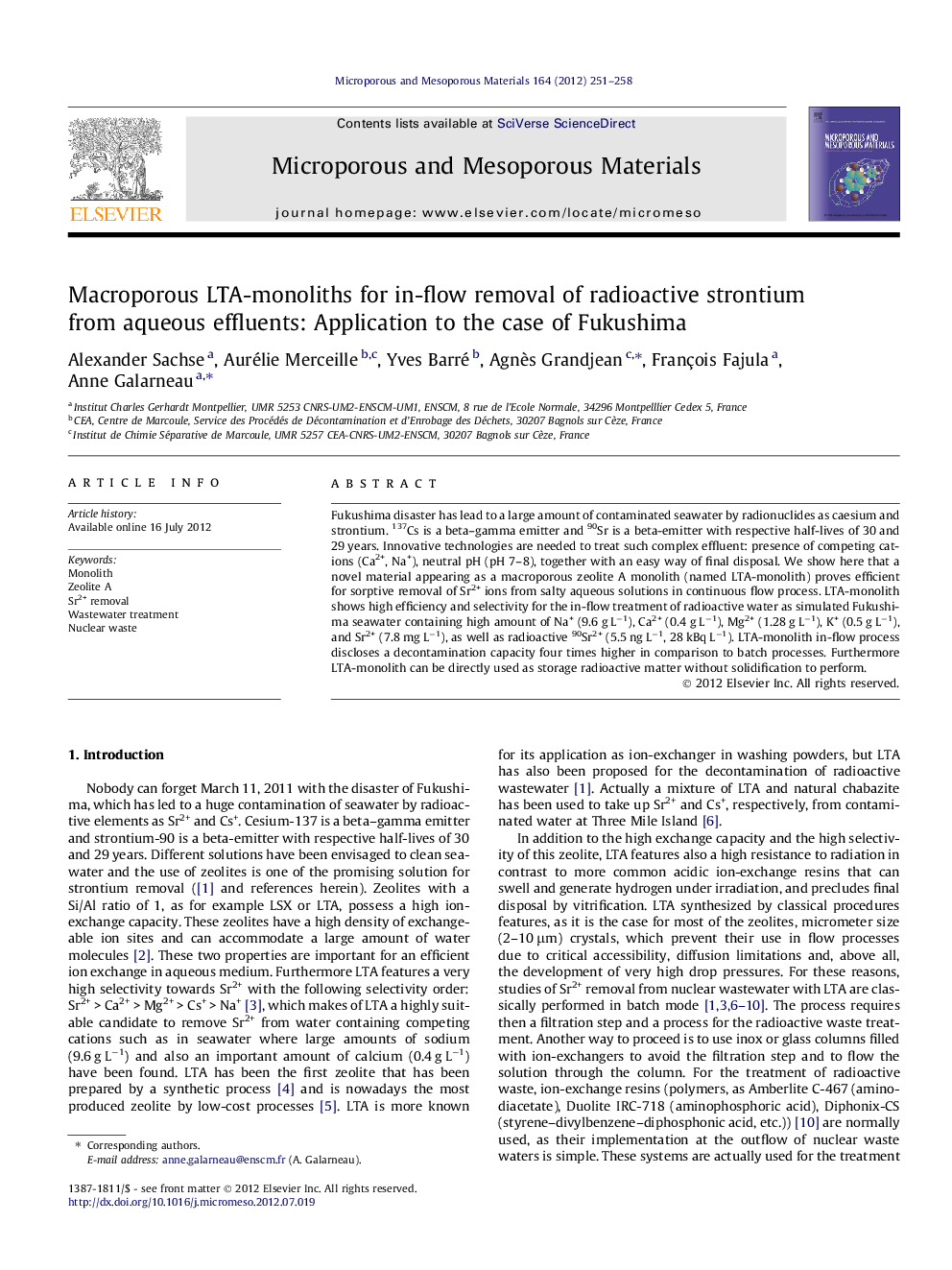| Article ID | Journal | Published Year | Pages | File Type |
|---|---|---|---|---|
| 74095 | Microporous and Mesoporous Materials | 2012 | 8 Pages |
Fukushima disaster has lead to a large amount of contaminated seawater by radionuclides as caesium and strontium. 137Cs is a beta–gamma emitter and 90Sr is a beta-emitter with respective half-lives of 30 and 29 years. Innovative technologies are needed to treat such complex effluent: presence of competing cations (Ca2+, Na+), neutral pH (pH 7–8), together with an easy way of final disposal. We show here that a novel material appearing as a macroporous zeolite A monolith (named LTA-monolith) proves efficient for sorptive removal of Sr2+ ions from salty aqueous solutions in continuous flow process. LTA-monolith shows high efficiency and selectivity for the in-flow treatment of radioactive water as simulated Fukushima seawater containing high amount of Na+ (9.6 g L−1), Ca2+ (0.4 g L−1), Mg2+ (1.28 g L−1), K+ (0.5 g L−1), and Sr2+ (7.8 mg L−1), as well as radioactive 90Sr2+ (5.5 ng L−1, 28 kBq L−1). LTA-monolith in-flow process discloses a decontamination capacity four times higher in comparison to batch processes. Furthermore LTA-monolith can be directly used as storage radioactive matter without solidification to perform.
Graphical abstractFigure optionsDownload full-size imageDownload as PowerPoint slideHighlights► Non-conventionnel macroporous zeolite LTA monolith as inniovative technology to treat complex radioactive effluents. ► Combination of high mass transfer properties of the monolith to the selective sorption of LTA with no pressure drop. ► Selective sorption of Sr in salty water in continuous flow process. ► Higher efficiency of the LTA-monolith in comparison to batch and packed-bed processes. ► Successful decontamination of seawater simulating Fukushima reactor effluents containing various competing cations.
